Nature lovers and the best national parks in the world go together like peanut butter and jelly.
The concept was championed by early conservation icon John Muir and set in motion when President Ulysses S. Grant signed a law establishing Yellowstone as the world’s first national park in 1872.
In the ensuing 144 years, there have been around 7,000 national parks created by nearly 100 different countries. From Afghanistan (which has just 1) to China (208), most countries have exceptional natural areas that are worth celebrating and preserving.
But these 15 stand out for us among the very Best National Parks in the world for wildlife lovers.
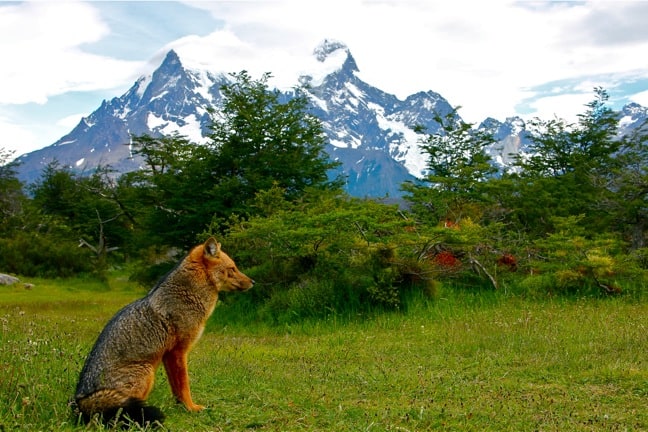
Best National Parks in the World for Wildlife Guide
- BANDHAVGARH NATIONAL PARK (India)
- BANFF NATIONAL PARK (Canada)
- CORCOVADO NATIONAL PARK (Costa Rica)
- DENALI NATIONAL PARK (USA)
- ETOSHA NATIONAL PARK (Namibia)
- GALAPAGOS NATIONAL PARK (Ecuador)
- GREAT BARRIER REEF MARINE PARK (Australia)
- KAKADU NATIONAL PARK (Australia)
- KRUGER NATIONAL PARK (South Africa)
- PANTANAL MATOGROSSENSE (Brazil)
- SERENGETI NATIONAL PARK (Tanzania)
- TONGARIRO NATIONAL PARK (New Zealand)
- TORRES DEL PAINE NATIONAL PARK (Chile)
- YALA NATIONAL PARK (Sri Lanka)
- YELLOWSTONE NATIONAL PARK (USA)
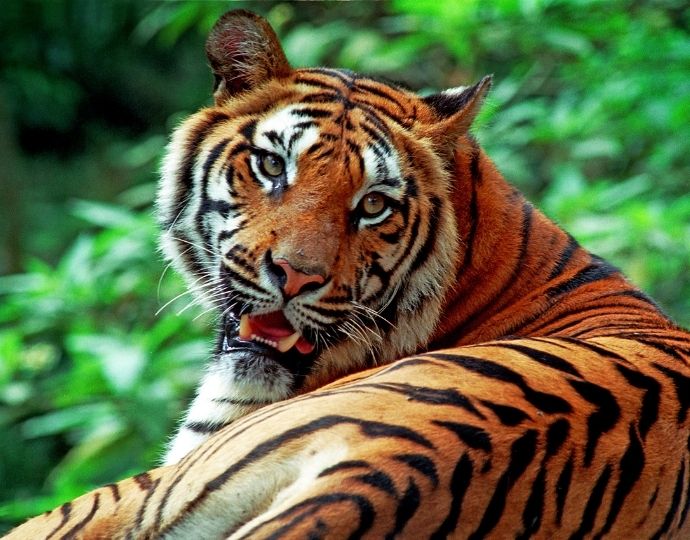
1. BANDHAVGARH NATIONAL PARK (India)
Located in the Umaria district of Madhya Pradesh, this 431-square mile park boasts one of the highest densities of Bengal Tigers in the world.
But the fearsome cat is hardly its only attraction: The park is also home to 36 other Indian Animals, including Leopards, Asian Elephants, and Nilgai (a.k.a. “blue bulls”).
Park visitors can also see more than 250 species of birds, and around 80 different species of butterflies.
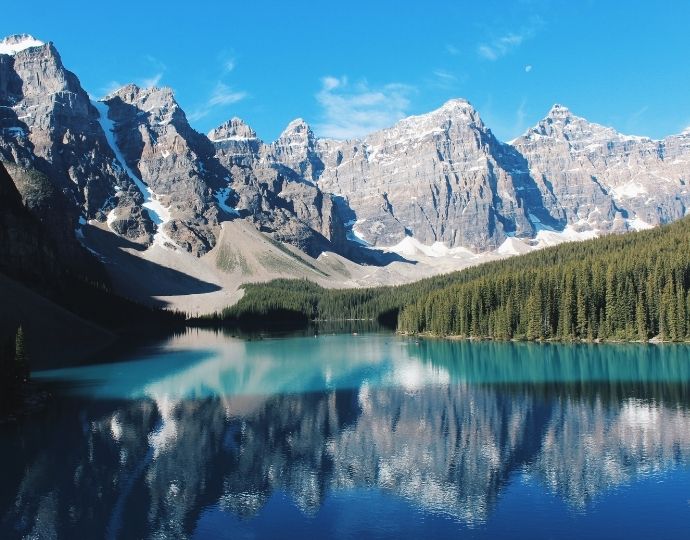
2. BANFF NATIONAL PARK (Canada)
Canada’s oldest national park is guaranteed to give you a Rocky Mountain high.
Its 2,564 square miles are filled with majestic mountains, coniferous forest (home to Grizzlies, Cougars, Moose, Elk and hundreds of bird species), glaciers.
There’s also the remarkably scenic Icefields Parkway, which extends all the way from gorgeous Lake Louise to neighboring Jasper National Park making Banff one of the best national parks in the world.

3. CORCOVADO NATIONAL PARK (Costa Rica)
Located on the Osa Peninsula, Corcovado has been referred to by National Geographic as “the most biologically intense place on Earth in terms of biodiversity.”
At 164 square miles, it’s one of the world’s few remaining large areas of lowland tropical rainforests.
The national park’s wildlife includes a range of ecosystems that provide homes to more than 500 species of trees and a dizzying array of wildlife, including the endangered Baird’s Tapir, the rare Harpy Eagle, Jaguars, and all four Costa Rican Monkey species.
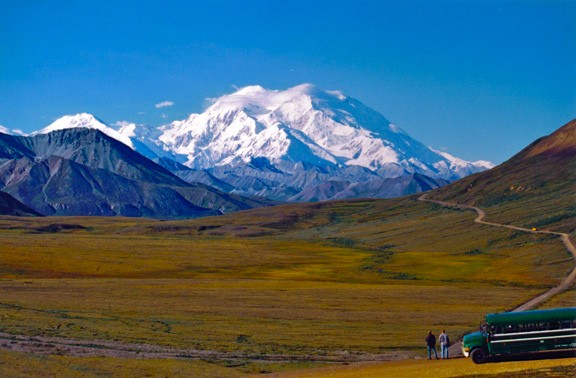
4. DENALI NATIONAL PARK (USA)
With six million acres of pristine wilderness and only one 92-mile road through it (which is open to private vehicles just 4 days a year), Denali is a nature-lover’s paradise.
The shuttle bus drivers are also engaging naturalist guides, allowing visitors to sit back, relax, and drop their jaws at the stunning scenery.
You’ll also see an exceptional array Alaska wildlife– we saw bears, moose, caribou, and even wolves– and, if you’re lucky, breathtaking views of the massive mountain the Tlingit (indigenous people) called Denali (a.k.a. Mt McKinley).
READ MORE: Alaskan Animals: 40 Species You Can See During Your Alaska Vacation
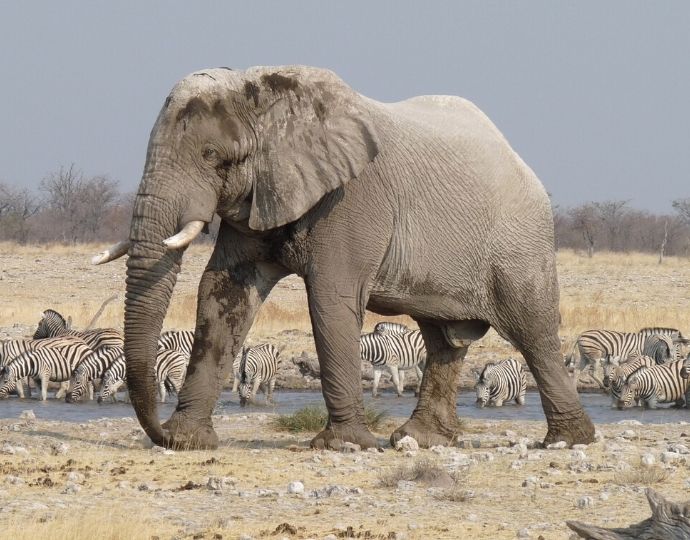
5. ETOSHA NATIONAL PARK (Namibia)
With an 8,600-square-mile landscape best described as otherworldly, Etosha centers around the salt pans from which it gets its name.
In the wet season, it fills with water and attracts birds such as flamingoes and pelicans; in the dry season it blows saline dust out to the Atlantic.
It’s also home to an impressive assortment of endangered African Animals, including four of the Big 5, African Elephants, Giraffes, Black Rhinos and White Rhinos, and the endemic Mountain Zebras.
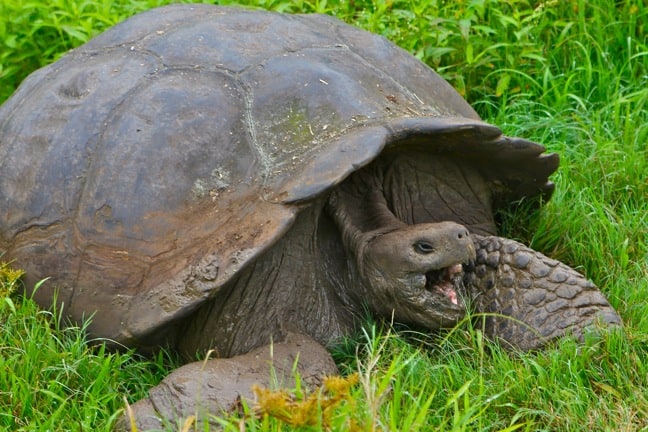
6. GALAPAGOS NATIONAL PARK (Ecuador)
Located 600 miles off Ecuador’s coast, this volcanic archipelago easily ranks among the world’s most beautiful natural parks for wildlife lovers.
The islands are home to a diverse array of endemic wildlife that seems completely unafraid of humans, including Marine Iguanas, Galapagos Sea Lions, Galapagos Tortoises, Galapagos Penguins, and Galapagos Birds.
The archipelago also offers some of the best snorkeling and birdwatching opportunities we’ve ever experienced making it one of the best national parks in the world for wildlife watching.
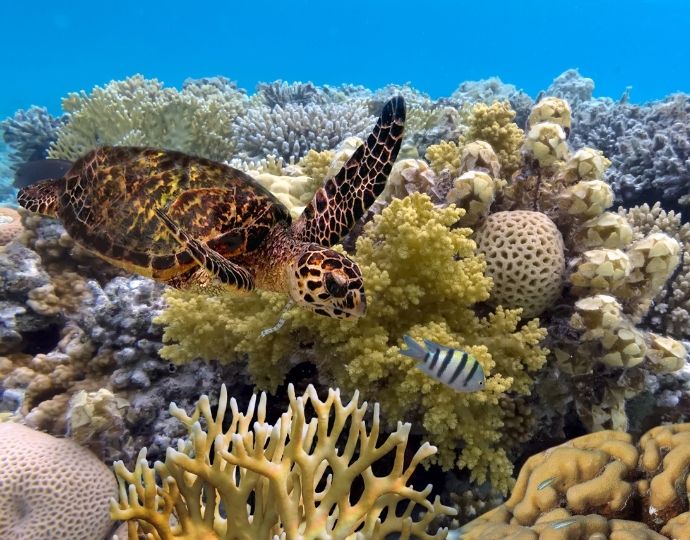
7. GREAT BARRIER REEF MARINE PARK (Australia)
The world’s largest coral reef system (133,000 square miles) is home to Cool & Weird Ocean Animals including 30 species of cetaceans, over 1,500 species of fish, six species of sea turtles, and around 125 species of sharks and stingrays.
The UNESCO World Heritage Site also includes mangroves and salt marshes on the Queensland coast, which provide fertile breeding grounds for saltwater crocodiles and frogs.
Visitors may also see get a chance to some of the 215 species of birds (approximately 1.5 million in total) that use its 900 islands to nest and/or roost.
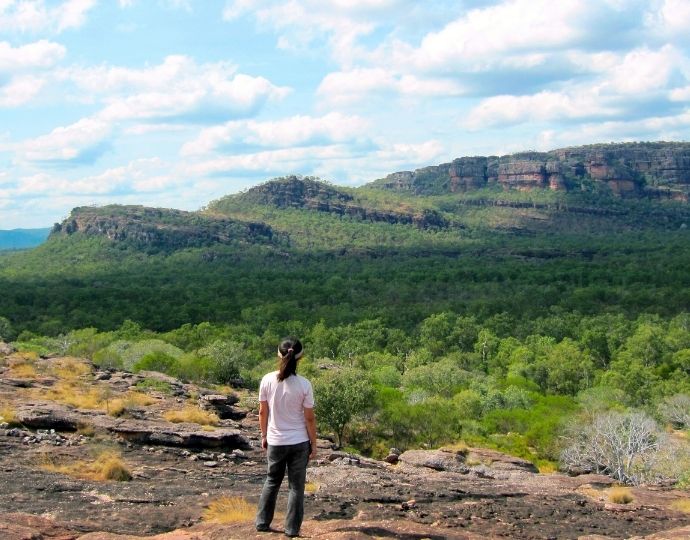
8. KAKADU NATIONAL PARK (Australia)
Located in the Northern Territory, Australia’s largest national park (12,427 square miles) features ecosystems ranging from wetlands and rivers to sandstone escarpments.
The Kakadu National Park is home to around 2,000 species of flora and fauna, including saltwater crocodiles, Flatback turtles, and hundreds of bird species.
It also boasts one of the world’s most spectacular collections of ancient aboriginal rock-art paintings.
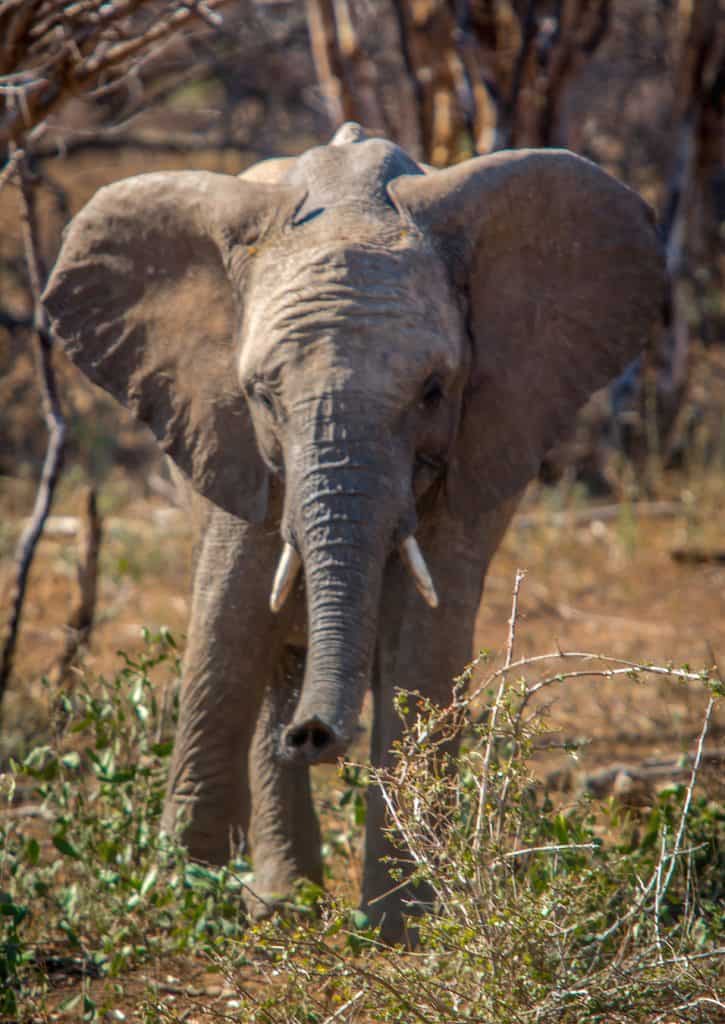
9. KRUGER NATIONAL PARK (South Africa)
One of the largest game reserves on the African continent, Kruger covers over 7,500 square miles.
Part of a UNESCO Biosphere Reserve, South Africa’s oldest national park (est. 1926) is home to an exceptional array of animals, including 517 bird species, 147 species of large mammals, and 114 reptile species.
Your Kruger National Park Entrance Fee gives you access to plenty of rare, endangered animals, including Black Rhinos and the gorgeous African Wild Dog.
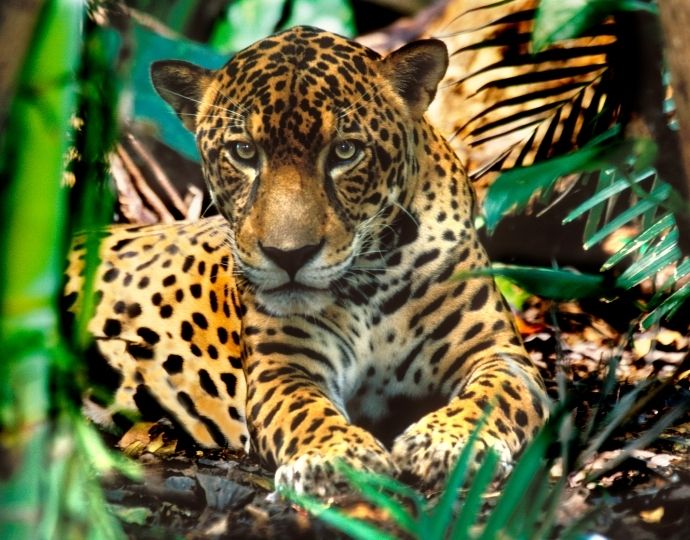
10. PANTANAL MATOGROSSENSE (Brazil)
Brazil’s Pantanal is one of the world’s largest tropical wetlands, estimated to cover 54,000-75,000 square miles.
Around 80% of the UNESCO World Heritage Site’s floodplains are submerged during the rainy season, making it one of Earth’s richest ecosystems.
Wildlife lovers will have a field day here: The area is home to approximately 1000 bird species, 400 fish species, 300 species of mammals (including the elusive Jaguar), and 480 species of reptiles.
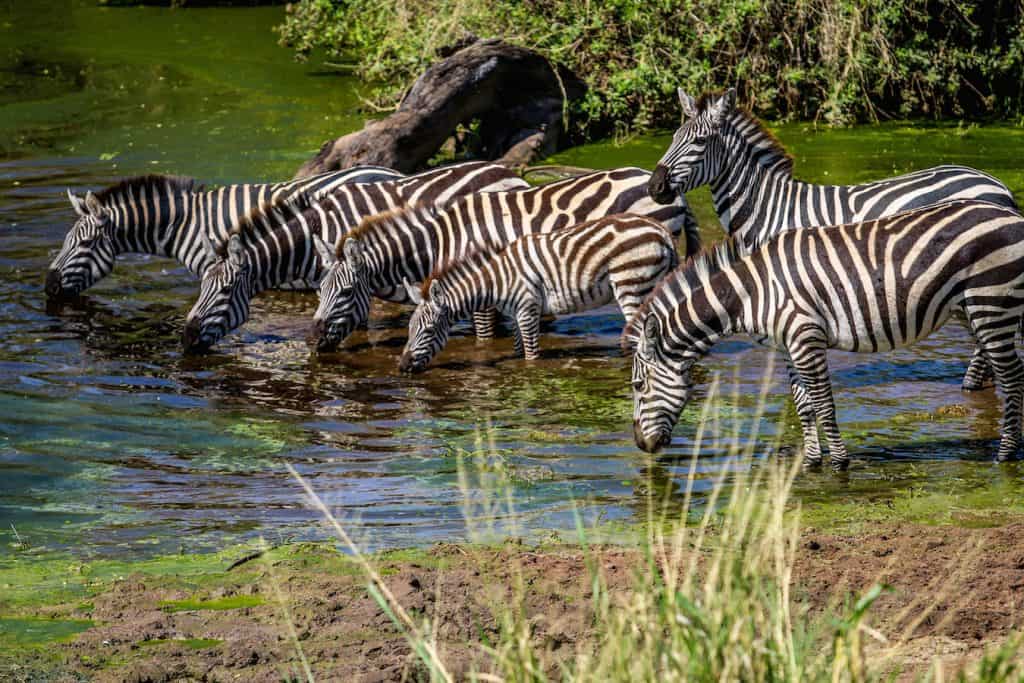
11. SERENGETI NATIONAL PARK (Tanzania)
Named after the Maasai word for “the place where the land runs on forever,” this 5,700-square mile UNESCO World Heritage Site is the starting point for the annual Great Migration from Tanzania to Kenya.
Its grasslands, riverine forest, bushy savanna, and open woodlands are home to a staggering array of wildlife, including Elephants, Giraffes, Nile Crocodiles, Colobus Monkeys.
You’ll also likely see huge herds of Wildebeest, Zebras, Gazelles, and Buffalo, which crowd the plains in staggering numbers during the wet season.
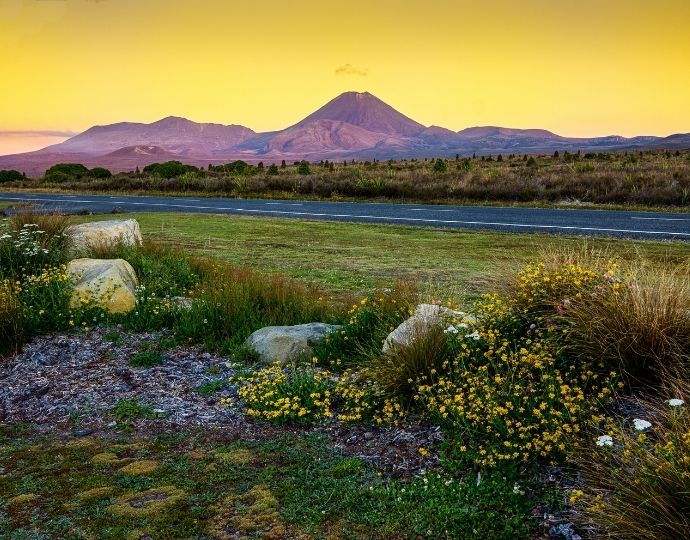
12. TONGARIRO NATIONAL PARK (New Zealand)
This is a rare dual UNESCO World Heritage Area.
It has been recognized both for its diverse ecosystems (which include active volcanoes, desert plateaus, and lush forests) and the cultural heritage of the indigenous Maori people.
It’s also a great place to see endemic birds such as Fantails, Tui and, if you’re very lucky, the rare Kakariki (parakeet) or Karearea (falcon).
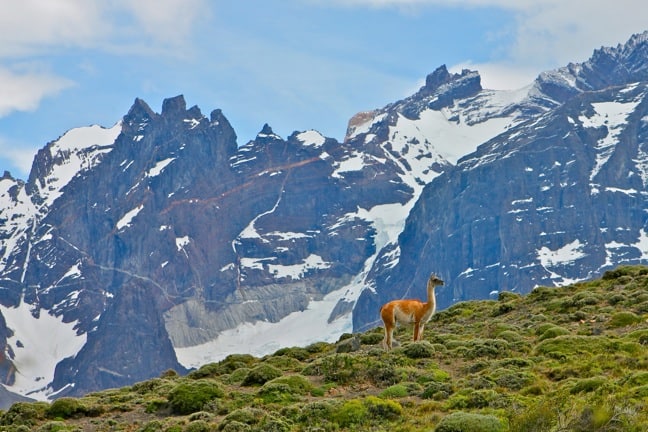
13. TORRES DEL PAINE NATIONAL PARK (Chile)
The remote wilderness experience Chilean Patagonia has to offer is like a slice of heaven on earth.
From towering rock formations (including the iconic Paine Massif) to expansive fields of Patagonia Flora and wind-blown grasses that look like waves on a sea of green, Torres Del Paine’s scenery is second to none.
Its abundant array of Chilean wildlife– such as Pumas, Guanacos, Foxes, Caracaras, and the massive Andean Condor– is nothing to sneeze at either.
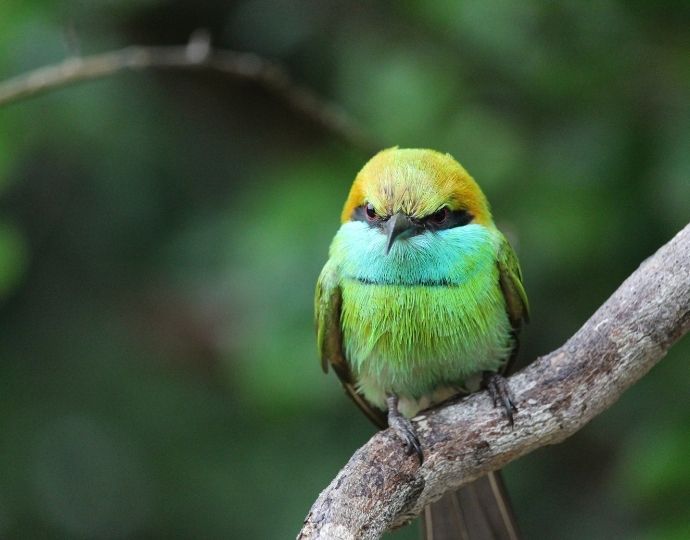
14. YALA NATIONAL PARK (Sri Lanka)
Sri Lanka’s oldest and most renowned national park is home to the country’s greatest concentration of wildlife, including Leopards, Elephants, Sloth Bears, Jackals, Buffalo, Crocodiles and Monkeys.
It also boasts over 150 bird species, and the adjacent Yala East (a.k.a. Kumana National Park) is a notorious nesting site for waterbirds.
Yala is a huge factor in Sri Lanka’s rapid rise as an Asian ecotourism hotspot.
READ MORE: Saving Endangered Asian Animals: The 10 Best Wildlife Conservation Programs
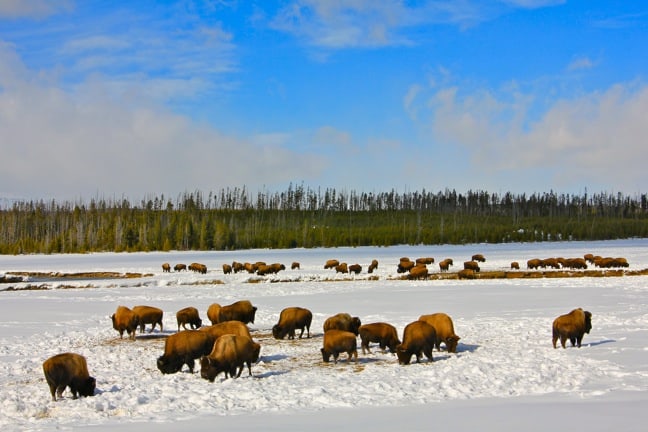
15. YELLOWSTONE NATIONAL PARK (USA)
The world’s first national park has been in the news a lot due to the harmful practices and animal selfies of irresponsible visitors.
But that doesn’t diminish the overwhelming beauty of its natural attractions, including Mammoth Hot Springs, Lamar Valley, the Upper & Lower Geyser Basin, and Grand Prismatic Spring.
The spellbinding scenery is matched only by the copious wildlife, including Grizzly Bears, Elk, Bighorn Sheep, Bison, Wolves, Bald Eagles and much more. –by Bret Love
